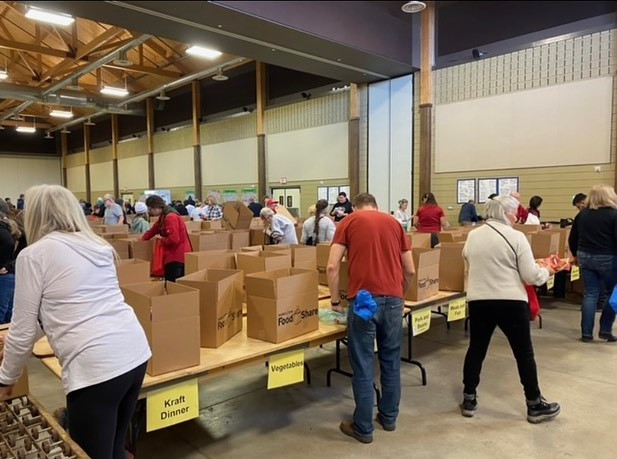An executive with the Hamilton, Ont., agency that provides for the city’s food banks said more people are using their services year over year.

The CEO of Hamilton Food Share said the need is at a crisis level with food banks registering 40 per cent more visits this past June compared with the same month in 2022.
“Last year at this time, we were supporting about 8,500 visits every month and this past March we were at 12,000 visits,” said Karen Randell, interim CEO of Hamilton Foodshare.
‘This translates into Hamilton’s emergency food system feeding about 33,000 individuals every month through our food bank programs.”
Randell said food banks are also seeing households that a year ago needed the support of a food bank only once a month now coming two or three times on average every 30 days.
With the influx, the Hamilton Emergency Food Strategic Planning committee is warning that the emergency food support system in the city is reaching its capacity.
The committee, made up of 16 local organizations that run 23 Hunger-Relief programs throughout the Greater Hamilton area, is “sounding an alarm” since the current infrastructure feeding the food share system is becoming inadequate, according to Randell.
“There are two issues we see in the summer: … a significant decrease in donations, but the other is that we see an increase in access,” Randell explained.
Food prices, up almost 20 per cent in the last two years, are also exacerbating the issue as highlighted in a recent retail grocery study from the Competition Bureau painting a picture of a highly concentrated industry dominated by few players.
Data from McMaster University’s food share study last year showed about a third of all low-income households in Hamilton use a food bank at least once a year and most are ones with children.
It’s estimated that 58 per cent of the households who access food banks in Hamilton are paying out more than 50 per cent of their total income on rent and utilities.
- Premier Moe responds to Trudeau’s ‘good luck with that’ comment
- Drumheller hoping to break record for ‘largest gathering of people dressed as dinosaurs’
- As Canada’s tax deadline nears, what happens if you don’t file your return?
- Planning a summer trip to Quebec’s Îles-de-la-Madeleine? You’ll have to pay up
Some 46 per cent of households that participated in the survey say they would become homeless without food banks.
Randell said the committee is in a dialogue with the mayor and the city to see where food share services fit into the city’s housing and homelessness strategy in terms of funding to sustain their initiatives.
For the time being, the outlet is encouraging Hamiltonians to help out via food and funding drives.
“What I would just say is every time you give, it makes an impact, whether it’s a single can of food, whether it’s a dollar, whether it’s $20,” Randell said.
“When you give to your emergency food bank, you support this system.”


Comments